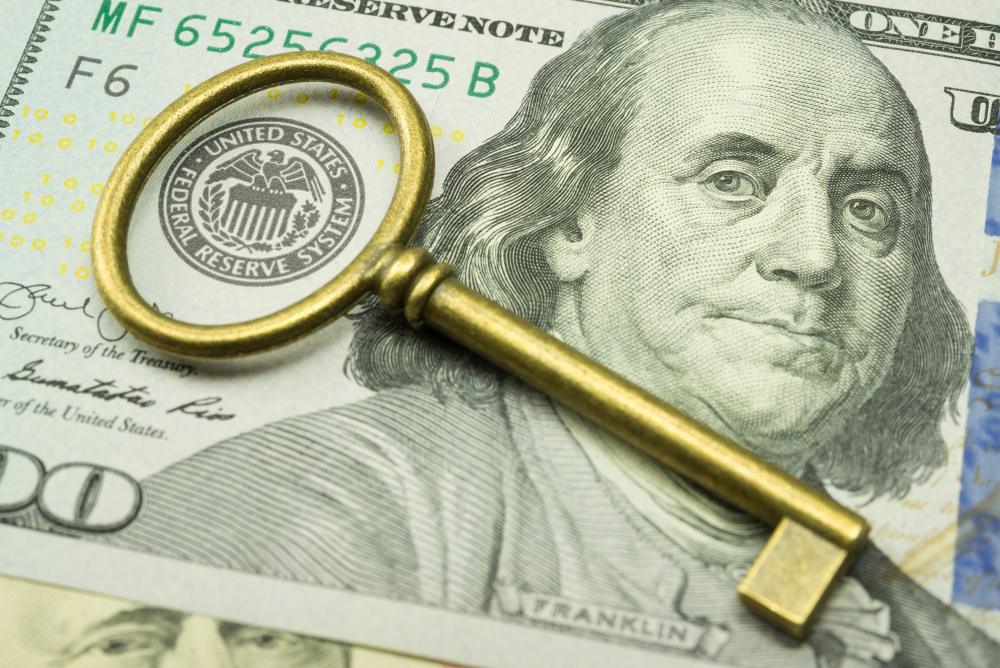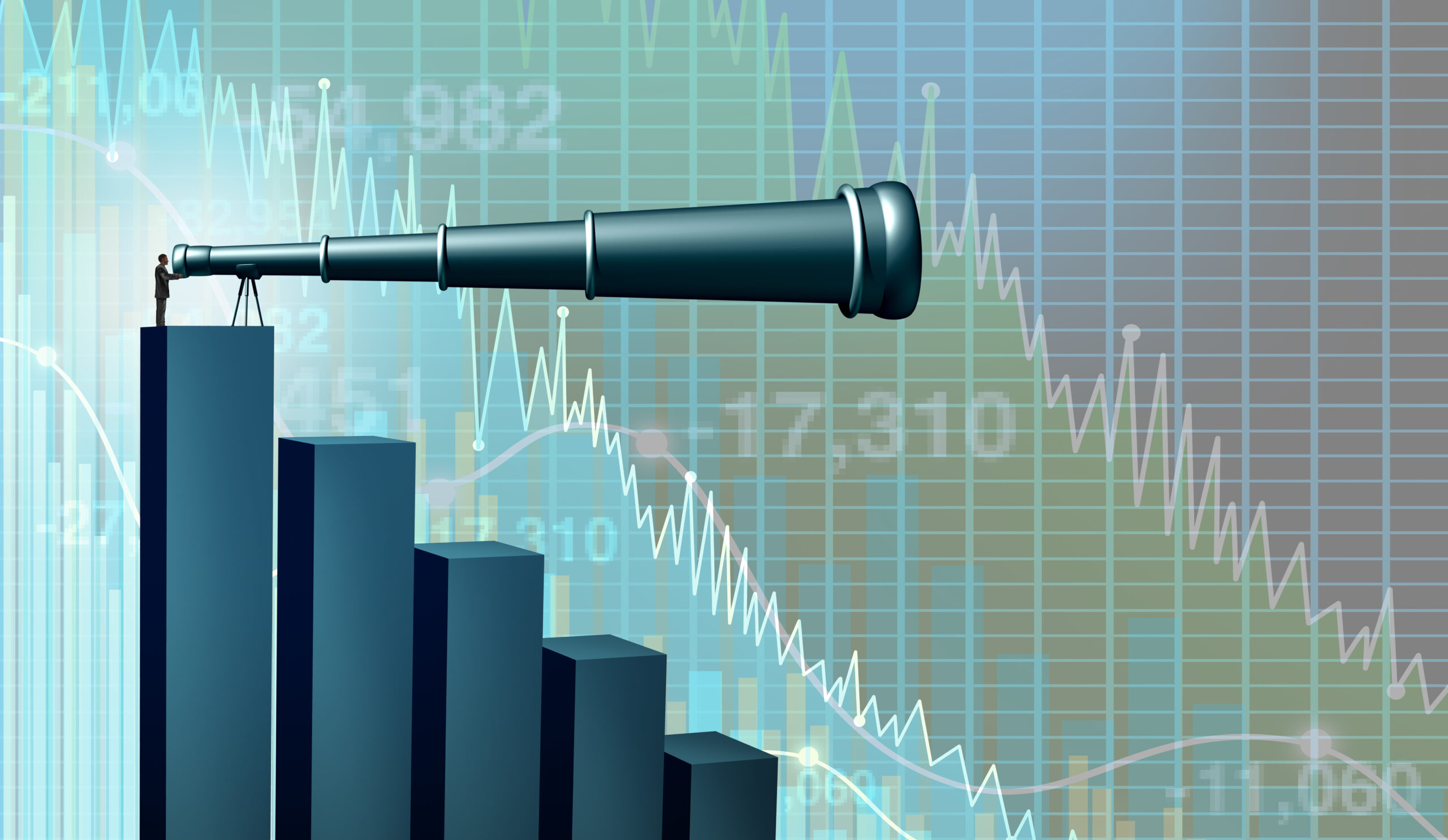Economy
Quixotic Fed Policy and the Real Estate Cycle

Over the past year U.S. mortgage rates have risen from sub-3% to over 7%. Unsurprisingly the nation’s real estate market is swooning; home sales are plummeting, inventories of new homes for sale are rising sharply and we are already starting to see signs that home prices are falling. Little doubt that most people over the age of 30 are suffering from some level of PTSD, remembering the economic carnage that came after the last collapse of the real estate market in 2007-08.
This real estate cycle and the last have similar roots — they were both created by bad policy on the part of the Federal government. The one bit of good news is that the underlying malfeasance in each cycle was completely different. Last time government policymakers did far too little, while this time it is fair to say they have done vastly too much. Ultimately, this means that this real estate cycle will have a much smaller negative impact on homeowners and thus the broader economy than the last one did.
The real estate cycle that generated the ‘Great Recession’ started with one of the greatest snake oil inventions ever dreamed up by Wall Street: the subprime mortgage-backed security. Regulators, believing in the economic myths of efficient markets and rational investors, sat idly by as trillions of dollars flowed into the housing market without any basic underwriting standards. The U.S. economy was overheated by the flood of bad debt and asset prices rose to unsustainably high levels driving both excessive consumer spending and housing investment. As with all pyramid schemes, this one eventually collapsed in on itself leading to a massive financial market mess, collapsed household net worth, and a recession that took over 8 years to fully recover from.
This time around the issue with regulators is not a lack of action, but rather too much. The Covid pandemic was a tragic human event but was never the existential economic crisis it was made out to be by too many economists and pundits. The result was one of the most preposterous overuses of stimulus ever experienced — in two short years the nation saw an enormous increase in Federal outlays funded by $6.5 trillion in fiscal borrowing. This was, in turn, funded by $5 trillion in new money delivered by the Fed in the form of quantitative easing despite the fact that the pandemic did not create any major financial problems. As a result, all this stimulus went straight into the money supply, and M2 ended up increasing by 50% in two years, faster than we’ve ever seen before.
When the money supply is expanded so dramatically and so quickly there is little mystery as to what happens — economists have studied such episodes since the very beginning of the social science’s existence two centuries ago. At first, because of money illusion, the excess liquidity creates a surge in economic activity—interest rates fall, asset prices rise, and consumer and business spending expand as a result. But inevitably this excess demand turns into inflation, which in turn causes interest rates to rise even as asset prices and spending fall.
And this is exactly what happened to the U.S. economy and why real estate markets find themselves where they are today. The excessive stimulus that began over two years ago caused mortgage rates to fall and household savings rates to increase. These two factors unleashed a massive amount of pent-up demand for homes into the market. Sales took off, tight inventories translated demand into bidding wars, and home prices leapt by over 40% in two years. None of this was sustainable because it was driven by excess money. Now inflation has kicked in, rates are rising, and the housing market is sagging.
But consider the differences between this cycle and the last one. The last cycle was driven by many years of excessive private borrowing, and the use of public stimulus occurred only after everything started to fall apart. This time the public stimulus was ultimately the driver of the housing bubble. It wasn’t private debt, but excessive public borrowing. Thus, the housing market that started to collapse in 2007 was marred by a very high debt-to-equity ratio, high household debt burdens, and an excess supply of housing. Today’s falling market has one of the lowest debt-to-equity ratios ever seen, low overall household debt burdens, and a very tight supply of housing following a decade of slow housing supply prior to the pandemic. Consider that at the start of 2007 U.S. households had $10 trillion in mortgage debt and $14 trillion in housing equity. Today the figures are $12 trillion in debt and $29 trillion in equity. In 2008, the U.S. housing vacancy rate was 2.8%, while in 2021 it was 0.9%.
Perhaps more importantly the last housing collapse occurred along with a collapse in overall consumer demand. They were highly linked during the Great Recession because it was the ease of obtaining mortgage debt that allowed consumers to overspend. This time around consumer demand is not being supported by debt accumulation but by the trillions of dollars in residual cash left over from the stimulus (household cash balances today are $4.6 trillion, compared to $1 trillion in 2018) combined with rapidly rising wages driven by a tight labor market. Hence, the drop in the housing market this time is occurring without a pullback in consumer spending and without the subsequent loss of jobs and income that hurts housing demand even more.
And this brings us back to the Federal Reserve and the current policies being pursued. Oddly, the Fed is acting as if inflation is hurting consumers, when in fact consumer spending is driving inflation. They are trying to stem inflation by jacking up interest rates, which will do little to cool base consumer demand (driven mainly by cash and earnings), and little to hurt homeowners who mostly have long-term fixed rate mortgages.
It is, however, hurting asset markets more than would be the case had the Fed just let inflation burn out on its own. And this is causing even more pain for housing assets. Still, this will not turn into a complete economic rout because the consumer is largely immune to the Fed’s efforts outside of falling asset prices. Yet again the Fed is pursuing the wrong policy and ultimately will do more harm than good.
But this harm is not as bad as the harm that was caused by looking the other way at Wall Street’s transgressions in the last cycle. Home prices may fall over the next year or two, but rental prices for housing will almost assuredly continue to increase at the same time given strong consumer demand. If we had to sum it up, the housing market of 2009 had too few buyers. The housing market of 2023 will be marked by too few sellers. The net result will be almost no foreclosures, limited price declines, and little in the way of household financial problems created the last time around. But it will be a very cold market for a while… at least until we get used to higher interest rates and begin to realize that not every negative shock is an existential crisis.
As my parents used to tell me in my teenage periods of angst: We are in danger of imminent survival.
Business
Economist Christopher Thornberg, State Treasurer Fiona Ma Headline New Forecast Conference

Coming October 5th
Economic Horizon 2024: What Lies Ahead?
The Inland Empire Regional Chamber of Commerce, in collaboration with Beacon Economics and the County of San Bernardino, is thrilled to announce that the anticipated economic forecast conference, Economic Horizon 2024: What Lies Ahead, Inland Empire? will be held October 5th from 3:30 PM to 6:30 PM at the El Prado Golf Courses in the vibrant city of Chino, California.
Esteemed economist, Dr. Christopher Thornberg will present complete outlooks for the U.S., California, and Inland Empire economies. “The Inland Empire stands at the crossroads of remarkable economic opportunities and challenges,” said Thornberg. “I’m excited to unpack the trends and shifts that will define the region’s economic landscape in the next year, and beyond.”
Known for his razor-sharp observations, and fun, energized delivery, Thornberg’s presentation will include pointed discussions about inflation, the Fed’s next move, housing markets, strengths and instabilities in the economy, and what current trends mean for the nation, state, and local region.
The conference will also be graced by the insights of California State Treasurer Fiona Ma as keynote speaker. In her words, “The strength of California’s economy is deeply interwoven with the growth trajectories of its regions. The Inland Empire, with its dynamism and resilience, is a testament to this synergy. I am honored to join ‘Economic Horizon 2024’ and share a vision where policies, partnerships, and potentials converge to elevate the Inland Empire to unprecedented economic heights.”
“This conference is a testament to the collaborative spirit of the Inland Empire and our commitment to fostering a robust, resilient economy,” said Edward Ornelas, Jr., President of the Inland Empire Regional Chamber of Commerce. “Our partnership with Beacon Economics and the County of San Bernardino aims to offer a platform for profound economic discussion, forecasting, and strategic future planning.”
Attendees can anticipate not only expert insights into the economy but also networking opportunities and a chance to connect with key business, government, and nonprofit leaders from across the region.
Full event details are available at: economy.iechamber.org
Economy
The Recession That Didn’t Happen… And Why Most Forecasters Got It Wrong
Bizz Buzz
Workforce Development Earns National Achievement Awards

#bizzbuzz
Inspired by the Board of Supervisors’ commitment to meet the needs of employers and jobseekers and foster a vibrant local economy, the San Bernardino County Workforce Development Department has been honored with eight 2023 Achievement Awards from the National Association of Counties (NACo).
Among the services and initiatives for which WDB was honored were the Rapid Response Community Resource Fair, Economic Recovery Business Outreach Program and, in partnership with the Public Defender’s office, the Record Clearing, Resource and Employment Fairs.
Thanks to strong and stable leadership and policy direction from Board of Supervisors Chair Dawn Rowe and her colleagues on the Board of Supervisors, San Bernardino County received a record-breaking 160 NACo awards this year. The awards reflect the Board’s efforts to cultivate the innovation that leads to the development of outstanding public service programs.
The NACo awards recognize the best of the best among county governments across the U.S. Nationwide, 40,000 county elected officials and 3.6 million county employees provide important services, such as caring for our physical and mental health, maintaining roads, ensuring public safety, strengthening environmental stewardship, administering elections and much more.
“The Workforce Development programs and services recognized by NACo highlight the extraordinary work being done by Workforce Development to enhance career opportunities for our residents and help businesses grow,” Rowe said.
The first Rapid Response Community Resource Fair was developed shortly after United Furniture Industries (UFI) abruptly laid off more 300 employees in the High Desert without advance notice just days before Thanksgiving 2022. When Workforce Development was alerted, staff quickly mobilized businesses and community partners to help connect those laid off to available employment opportunities, as well as various other community resources. Approximately 275 of the affected UFI employees were offered new employment opportunities as a result.
The Economic Recovery Business Outreach Program was a pilot program that tapped into the wide-reaching business network of chambers of commerce. This collaboration between WDB and various chambers of commerce throughout the county was designed to leverage the relationship between chambers and small businesses to build awareness and accessibility to Workforce Development services available to them. Outcomes as a result of this partnership include various successful services including job listings, job fairs, positions filled, and job training assistance, among others.
Perhaps the most impactful program receiving this recognition is the Record Clearing, Resource and Employment Fairs. Workforce Development and the Public Defender’s Office have partnered with businesses and community organizations to increase economic access and equity. The partnership was designed to bring critical resources directly into the community – to churches, community centers, community colleges, and America’s Job Centers – for those looking to remove barriers and increase their access to employment opportunities and other services. The Public Defender helps participants by providing expungement or record clearing services, and Workforce Development brings employers with job opportunities, all within the same location. The events have been well received and proven useful to the community, making this a long-term partnership, not only between Workforce Development and the Public Defender’s office but a long list of other community organizations that have also participated.
“Our team and board feel fortunate to be recognized for these awards,” said William Sterling, chairman of the Workforce Development Board. “The underlying factor of the programs being recognized are partnerships. We feel fortunate for our staff and the relationships developed with other departments and organizations and the impact these services have had within our communities, which is at the core of what public service is supposed to be.”
-

 Opinion1 month ago
Opinion1 month agoSurge in Unemployment Among California Youth Linked to Minimum Wage Hikes
-

 Commercial Real Estate Transactions3 weeks ago
Commercial Real Estate Transactions3 weeks agoSRS Real Estate Partners Announces Record-Breaking $6.15 Million Ground Lease Sale of a New Construction Chick-fil-A Property in Murrieta, California
-

 Health & Wellness3 weeks ago
Health & Wellness3 weeks agoBuddha Bars: A Mother’s Innovative Solution to Healthy Snacking
-
By Press Release1 week ago
California Employment Expansion Continues But Still Trails Nation









